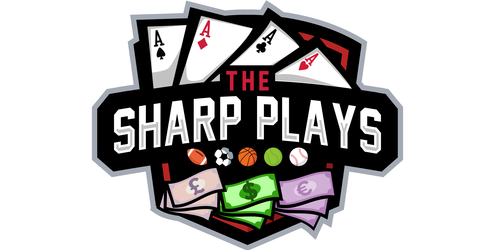
Originally published in a TSP Live Insider issue (January 2023)
I get asked all the time:
💭 “How are lines set in sports betting?”
So, let’s break it down using a real-world example. We’ll walk through how I would set the line for a college basketball game and how sportsbooks approach this exact process.
🧠 Step 1: Let the Algorithm Speak
The first step in setting a line is cold, hard math.
You plug both teams into a statistics algorithm—a tool that analyzes key team data like points per possession, rebounding, efficiency, defensive metrics, etc. The initial result assumes a neutral court.
📊 Stat result: Pittsburgh -6 vs. Florida State
🔁 Step 2: Adjust for Head-to-Head Results
Next, check if the teams have already played this season. In our case, they had:
- Florida State beat Pitt by 7 points as a +7 underdog, in Pittsburgh.
🎯 Adjustment: Give FSU a +2 point bump
Now we’re at Pittsburgh -4
👉 Note: Adjustments for past results are usually minor. Even when key players are out, line shifts are often only 2–5 points.
🏟️ Step 3: Factor in Home Court
- The game is being played at Florida State
- FSU’s home record: 5-7
- Pitt’s road record: 6-2
📉 FSU doesn’t have much of a home-court edge
🎯 Adjustment: +1 point for FSU
Now we’re at Pittsburgh -3
📣 Step 4: Public Perception Matters
Let’s look at the narrative:
- Pitt beat #20 Miami, UNC, and demolished Louisville
- FSU lost to Miami, Clemson, NC State, and Syracuse…and barely beat Louisville by 3
🧠 Public sentiment: “Pitt is HOT. FSU is trash.”
🎯 Adjustment: Add 2 points to account for anticipated heavy public action on Pitt
Why not give more?
Because if you hang a number that’s too generous (say, +6 FSU), sharps will pound it.
Now we’re at a final price of Pittsburgh -5
📌 Final Line: Pittsburgh -5 at Florida State
Here’s the step-by-step:
- 📊 Algorithm: Pitt -6
- 🔁 Head-to-head result: Adjust +2 for FSU
- 🏟️ Home court: Adjust +1 for FSU
- 📣 Public perception: Adjust +2 for Pitt
🧮 Final result: Pitt -5
🧾 What Actually Happened?
- Opening line (Bookmaker): Pitt -4.5
- Moved to: -5.5
- Closed at: -4.5
- Final score: Pitt 83 – FSU 75
- Pitt covered by 3.5 points
Pretty damn close to my -5 target line. 🎯
💡 But Wait… Why Not Just Set the Line at -8?
Because setting a line is not about predicting the outcome. It’s about predicting a price that:
- Attracts balanced action
- Avoids lopsided exposure
- Produces a decision, not a push
Books make no money if a game lands perfectly on the spread.
They just refund all bets. Zero profit.
In this case, even though Pitt won by 8, the sharp money was actually on FSU. If the book had set the line at Pitt -8, it would’ve been a buffet for sharps.
🎙️ A Word to Clueless Announcers…
“The oddsmakers really nailed this one!”
Every time I hear that, I want to scream:
“You f*cking moron! You have no idea what you’re talking about!”
The goal is not to land the final margin on the spread.
The goal is to create a line that generates action, not perfect predictions.
🎲 Why It’s Mostly Just Math & Probability
Let’s say most NBA games end within a 1–20 point margin. That gives you 20 likely point spreads. If you randomly set one, there’s a 1 in 20 chance it matches the exact final score differential.
Over 2,460 NBA games per season:
- 2,460 ÷ 20 = 123 games that land right on the number—purely by chance
Even if you expand the range to a 50-point differential, it still yields 49 hits per season. That’s not brilliance. That’s basic statistics.
🧠 The Real Art of Line Creation
- Use models and data
- Apply context and perception
- Factor in public and sharp behavior
- Aim to balance action, not predict final scores
Because in the end, books aren’t trying to be prophets…
They’re trying to be profit-makers.
🏁 Final Word
Whether you’re new to betting or a seasoned vet, understanding the logic behind line creation makes you a smarter, more disciplined gambler. Don’t fall for media myths or casual fan takes. Know the math. Trust the process. And as always…
🍀 GOOD LUCK!
